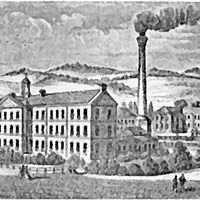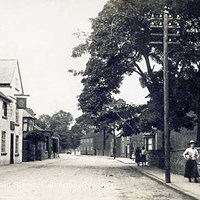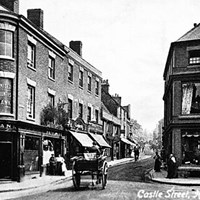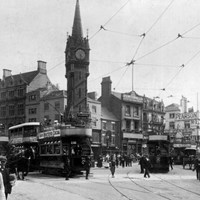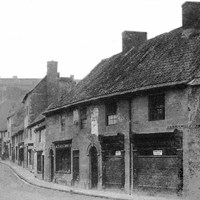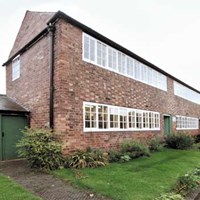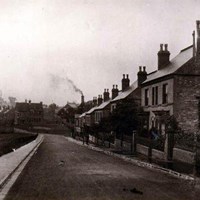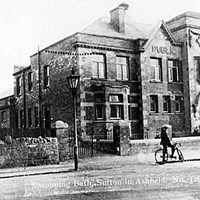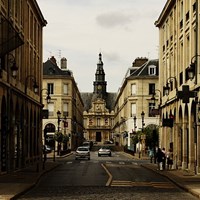The Places
Many of the villages, towns and cities in the East Midlands have played a role in the knitting industry's history at some point.
Framework knitting was introduced to places such as Nottingham, Belper and Shepshed from the seventeenth and eighteenth centuries. The wealth generated by the industry stimulated growth and shaped today's towns and cities. Within many of these places evidence of the past industry survives in the form of workers' cottages, frameshops and factories.
The manor of Bradelei was given to Henri de Ferrieres by William the Conqueror following the Norman conquest. The family used the manor as a base for hunting and entertaining and its name evolved from Bradelei to Belper (from the French 'Beau Repaire' meaning beautiful retreat).
Find out moreThe Anglo Saxon settlement of Calverton, meaning 'farm where calves are reared' was recorded in the Domesday Book as having a church and a value of £1 10s 10d. The heathland around the village provided grazing pasture for sheep and an income for the villagers.
Find out moreThe history of Derby began in the Roman period when a fort was built on an area of high ground above the marshes of the river Derwent and river Trent. A later fort was built on the east bank of the Derwent and named Derventio.
Find out moreThe Anglo Saxon placename for Hinckley suggests something about its origins. Hinckley or 'Hynca's leah' means 'woodland clearing of a man called Hynca'.
Find out moreRatae Coritanorum, later to become Leicester, was originally an important Roman military centre at the junction of the Fosse Way and the road from Colchester to the centre of the country.
Find out moreLoughborough or 'Lucteburne' meaning 'fortified house of a man called Luhhede' is thought to have developed in Anglo Saxon times around the Woodbrook.
Find out moreEvidence of human occupation in the Mansfield area has been found dating back to Roman times. Roman coins were uncovered together with a Roman villa near Mansfield Woodhouse.
Find out moreThe name Snotengaham was first recorded in the late ninth century, but the 'S' was dropped in the twelfth century. This Anglo Saxon name meant 'homestead of the people of Snot'.
Find out moreExcavations close to Ruddington have revealed evidence of Bronze Age occupation in the area (c.1500 BC).
Find out moreShepshed, from its place name meaning 'sheep headland', appears to have developed an early link with sheep farming.
Find out moreSutton-in-Ashfield is situated at the western edge of Sherwood Forest on an area of high ground close to the Nottinghamshire Derbyshire border.
Find out moreThe town of Troyes shares a common history with many towns in the East Midlands.
Find out more